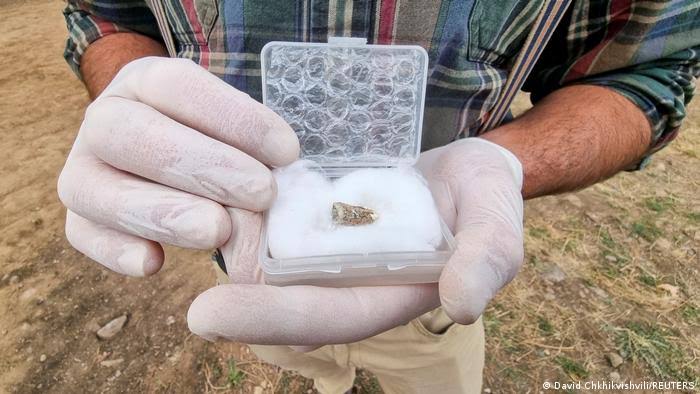
A premature human species tooth that goes back to 1.8 million years has been found by archaeologists in Georgia.
A research student at the town of Orozmani, 100 kilometers southwest of the Georgian capital Tbilisi, made the discovery last week, according to a Reuters story. The region is close to Dmanisi, where in the late 1990s and early 2000s, human skulls from 1.8 million years ago were discovered.
The current discovery, in the opinion of the archaeologists, firmly establishes the area as the location of the oldest prehistoric human settlements in Europe and maybe anywhere else outside of Africa. Well, the research still bases itself on predictions.
What does the research group have to say?
“Orozmani, coupled with Dmanisi, constitutes the hub of the oldest dispersion of old humans — or early Homo — in the world outside of Africa,” the center stated in its release.
The ramifications of the discovery, according to British archaeology student Jack Peart who discovered the tooth close to Orozmani, are “enormous.”
The teeth may have belonged to a “relative” of Zezva and Mzia, the names given to the individuals whose nearly full 1.8 million-year-old fossilized skulls were discovered in Dmanisi, or so claims the scientific leader of the archaeological team, Giorgi Bidzinashvili.
The earliest known fossil of a human is a partial jaw that was found in present-day Ethiopia, dating to about 2.8 million years ago.
Homo erectus, a hunter-gatherer species that predates modern humans, is thought to have left Africa around 2 million years ago. The Georgian sites are home to the oldest early human remains ever discovered outside of Africa, however, ancient tools dating to around 2.1 million years ago have been found in modern-day China.
Research has been going on for years
The crew began excavation work at Orozmani in 2019, but due to the pandemic, they were forced to postpone their excursion to 2020. Last year, they stepped up their efforts. They also found ancient tools and the remains of extinct species, including saber-toothed cats and Etruscan wolves, in addition to the tooth. At a site in Dmanisi, Georgia, recent digs also yielded the remains of one of the earliest examples of hunting dogs ever discovered, dating from about 1.8 million years ago.
About the human evolution
People with our morphology—anatomically modern Homo sapiens—evolved roughly 300,000 years ago, according to fossils and DNA. Surprisingly, archaeology—tools, artifacts, and cave paintings—indicate that sophisticated communities and technology—”behavioral modernity”—emerged relatively recently, between 50,000 and 65,000 years ago.
This is interpreted by some experts as indicating that the earliest Homo sapiens weren’t totally modern. However, the various data monitors various things. Skulls, DNA, and cultural artifacts provide information about the brain. Most likely, our brains evolved before our cultures.
Although scientists are unsure of which animals were our exact direct forebears, early Homo sapiens descended from ancestral species. This is true because the fossil record of humans includes evidence of both extinct animals and those that were our forebears.
It is particularly challenging to pinpoint the precise relationships between various species because many fossil beds only contain a few bones or incomplete skeletons. Archaeologists also frequently discover and identify new species, which further complicates matters.
A team of scientists from the University of Sydney and the Garvan Institute of Medical Research in Australia, led by geneticist Vanessa Hayes, discovered the solution in 2019.
The group researched modern mitochondrial DNA, historical climatic models, and linguistics (mtDNA). They matched the mtDNA in databases from more than 1,000 other Africans, predominantly from southern Africa, to DNA from 200 live individuals from various communities.